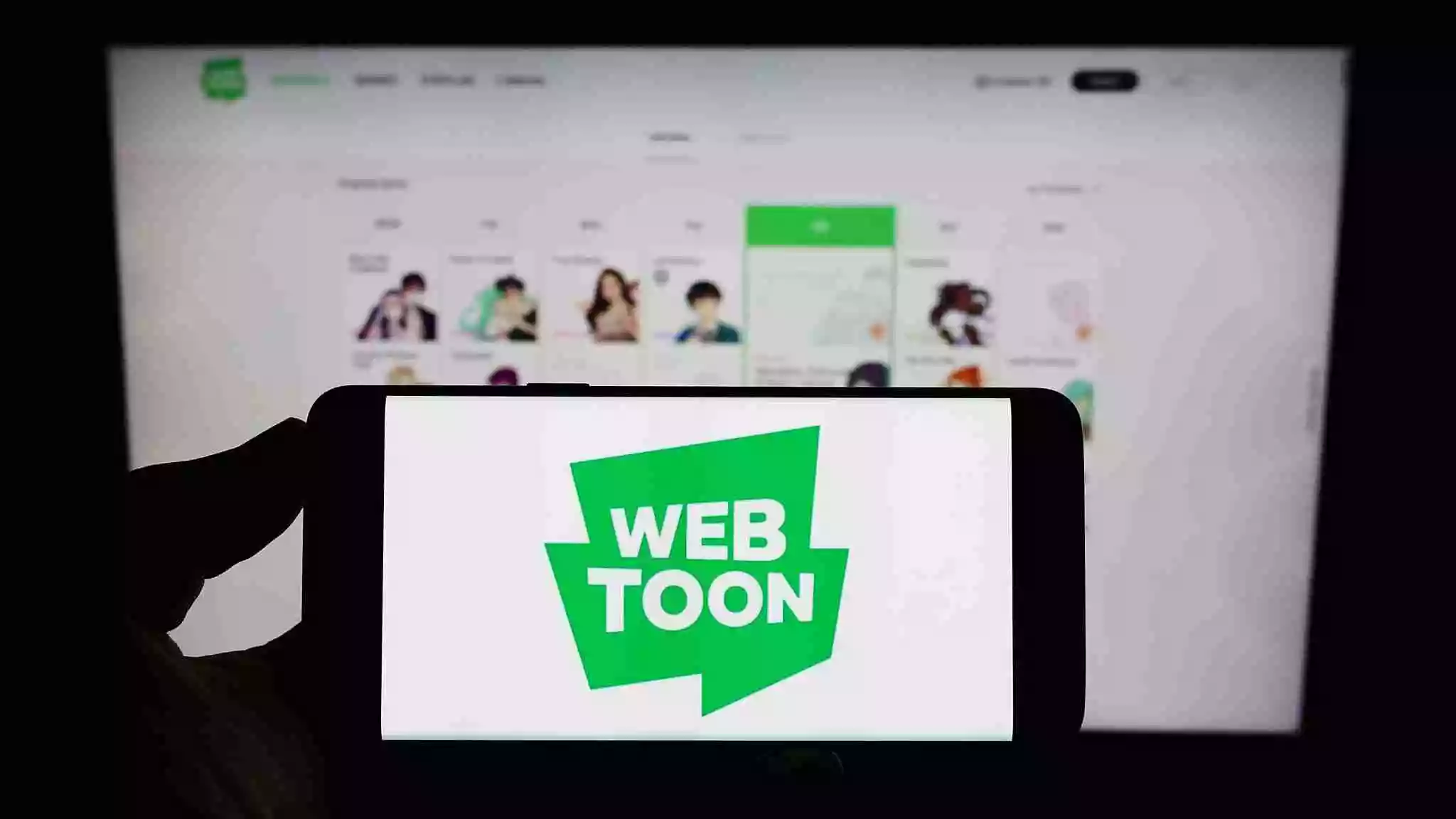Why Webtoons?
Gone are the days when children and students must hide their comic books from their parents and teachers to enjoy them secretly. Thanks to webtoons, folks can read comics anywhere on the Internet. But have you ever come across a publishing platform that primarily posts webtoons and generates substantial revenue from ads?
We bet you haven’t if you are not a comics geek or from Korea. In Korea, 1 in 3 people reads webtoons on a smartphone every week (Src). And when you ask a person about his/her favorite webtoon platform, chances are high that you’ll be introduced to Naver’s Webtoons, a publishing portal for comic lovers.
Naver, which is the leading search engine in South Korea, attracts the largest number of comics fans, and Webtoons has been contributing hugely to Naver’s overall revenue since its inception. So, is this the reason why we chose Webtoons for our next Becoming series? Well, of course, revenue matters the most. But Webtoons’ unique and interesting growth strategies are the factors that attracted us to them.
To give you an overview of their growth rate in the past decade, here are a few statistics:
- Webtoons started as a startup in 2004 and outpaced some of its competitors, such as Daum, another search portal with the second-largest share in the Korean market.
- Webtoons made their international debut in 2014. For 10 years, the publishing portal thrived in Korea, and as of today, more than 41 million comic geeks across the globe visit the website monthly.
- Last year, Naver’s Webtoons app became the No. 1 in not only in Korea but also in Japan. The app is installed on more than 50 million people’s mobile devices. Sales grew fast, and the company hit $502 million in revenue.

How It All Started?
Webtoons.com was launched by Junkoo Kim, a self-proclaimed comics geek, in 2004. In the late 90s, the Korean economy collapsed, including the Manhwa (Korean term for animated cartoons) industry. As many comic companies were shutting down production, Junkoo Kim wanted to help webtoon lovers by getting the comics into their hands for free. Kim brainwashed his mind and ended up establishing an in-house startup, Webtoons.
Number of Artists – 4 (Src).
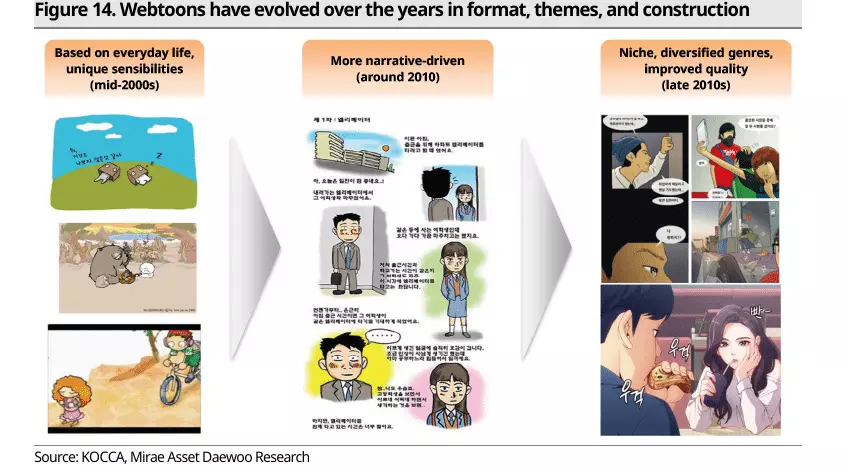
Where Are They Today?
Naver’s Webtoons revenue totaled ~60 billion won (175% YoY Growth) and hit 60 million monthly visitors last year. Over the past two years, Naver’s Webtoons saw a hike of 71% in its monthly readers (Src). The global monthly impressions of Webtoons are 328,000,000 (328 million).

“When your hobby becomes your career, you will always stay motivated. Think of founding a company as one of the ways to pursue what you love to do.”
– Junkoo Kim, CEO, Webtoons (Src)
Becoming Webtoons
The Early Years (Till 2013)
It was 2004 when the traditional comics industries were about to crash due to pummeling by rampant copyright infringements. Amidst those uncertain days, a comics geek, Junkoo Kim, who grew up reading hundreds of Japanese and Korean comics, thought of ways to get new and original cartoons. And this brainchild of JunKoo Kim introduced Webtoons to the Korean people who were already scrolling through the web pages.
“There weren’t any series coming out, there were no big hits and there weren’t any comics I could read.”
– JunKoo Kim,CEO and Founder, Webtoons (Src)
When Junkoo launched Webtoons.com, he wasn’t a part of Naver corporation as it wasn’t planned that way. In fact, the whole purpose of Webtoons was to turn his interests into a career. However, he knew to expand the startup; he’d required a financial hub and a team to run the website.
Soon after creating the website, Junkoo Kim learned about Naver Corporation investing in online comics and cartoons. So, he applied to the company even when there was no team for Webtoons. Unsurprisingly, the company found him passionate and decided to invest.
Initially, the challenge in front of the publisher was to find the perfect format to display comics on the web pages. Traditional comics could be designed and read from one panel to another panel horizontally. But, to read digital content, readers cannot flip a page and have to scroll through one page. And this was something new to him. Besides, there were a limited number of artists who had the capability of drawing comics in a scrolling manner.
So, how did he manage to find people and a way around this? The publisher took the help of a third party and developed an effective Canvas.

Canvas, where artists drew webtoons for the website
Get the ball rolling
People were looking for something to survive the economic crash. When JunKoo Kim found out that many people were getting laid off, he thought to give them an offer that would benefit all. The offer was – to create a series of stories (comics) for the website, and if it gets liked by the readers, they would be rewarded.
After introducing the offer, many participants created webtoons and shared their series on the portal. The strange fact was that the publisher chose people who weren’t even working in the background of the comics. One of the artists, Kyusam Kim, was a real estate agent when he was given a chance to showcase his work on the site. And today, if you look at the list of famous artists on Webtoons, Kyusam will be amongst the top.
In a few months, the publisher created a network of artists and had a bunch of narrative images that were free to read for the visitors to the website. The approach to finding a team of illustrators and artists was going well. What was the next goal? Increase engagement on the website.
To do that, the publisher kept a “line-up matrix” of the latest webtoons to find out the genre and the underserved group, pushing them to the top to present new stories for visitors. While it’s typical to use the best placements for the most-viewed webtoons, visitors wouldn’t know that there are new stories up and running — on Webtoons.
Besides, individual stories are also structured keeping the readers in mind:
“Story-based long-running webtoons are carefully structured like dramas in ways that keep readers begging to know what will happen next. On the other hand, episode-based shorter webtoons revolve around an appealing central character. Either way, readers are compelled to look for the next episode,”
The company allowed readers to comment on the series and had a set-up when a comment was “most-liked”; it came to the top so that the author could view the responses and opinions. Moreover, readers could rate each episode on a scale from 1 to 5, and the ratings also helped the authors to measure their performance immediately. Even today, it works as a barometer for the Webtoons content creator.
The website started gaining enough visitors from Korea, leading the publisher to increase the team of cartoonists and content creators. So, to lure more talented people, Webtoons proposed an offer of splitting profits with the authors of the respective cartoon series.
Some of the authors could opt to charge their readers when they got popular, and they could share the ad revenues generated by the publisher. Wait, ad revenue? Did the publisher display ads during those times?
Well, yes. To run a publishing business, advertising is something that cannot be neglected. Back then 2008, there weren’t many technologies, and native ads were considered one of the easiest ones to get started with.
Mixing Native and Direct advertising
Naver has an interesting history of leveraging both native and direct advertising at the same time. The publisher blends ads into the website’s organic content format. The publisher partnered with several retailers to run direct deals. One of the native advertising campaigns was related to a mobile game, “Cookie Run.”
What it did differently was given an option for the advertisers’ preference to select their favorite cartoonists who would further create stories for their brands. And these stories were actually ad creatives for advertisers. The success rate of advertising was measured in terms of the popularity of the cartoonist creatives as well as the reach and viewability. However, the positioning of ads on the website used to move down as new ones were posted.
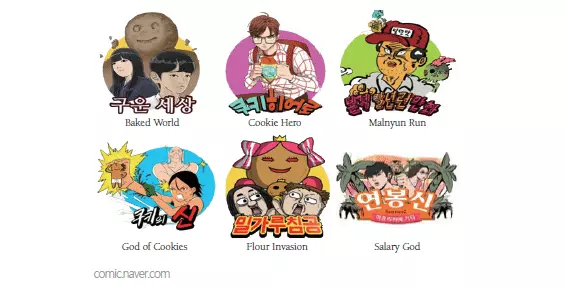
Native ads on Webtoons.com
Because native ads don’t feel the same as typical display ads, the publisher found that people are likelier to view them or engage with them. Though there are no references to know the native advertising partners of the publisher or how long the Webtoons’ team continued it, we believe that the strategy worked but not to the extent the publisher expected.
Besides, the publisher had to share a percentage of ad revenue with the artists who created webtoons for the advertisers. And with low revenue generated out of native ads, the publisher was getting negligible profit on its hand. When the parent company analyzed that the performance of native advertising wasn’t as effective as expected, it shifted to leverage Paid per Campaign advertising.
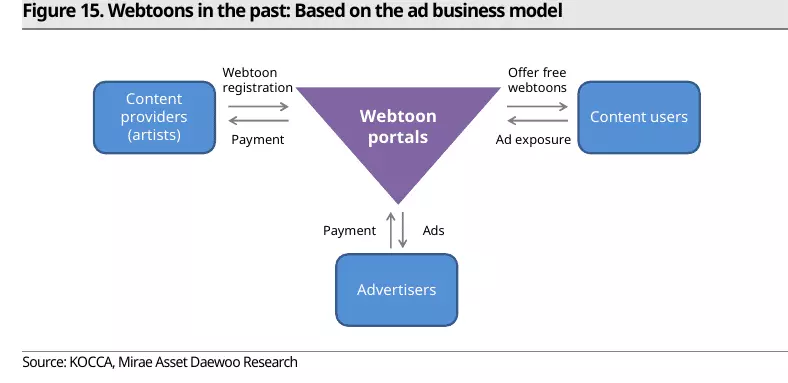
Paid Per Campaign Advertising
Since Naver was one of the biggest search engines in Korea, the company started a PPC campaign for Webtoons. Being Google for Korean people, Naver received millions of queries daily and was well aware of what online consumers were looking for. So, taking advantage of the privilege, the publisher ran Paid Per Campaign on some popular comic websites and did search advertising for Webtoons.
Now, whenever a comic geek tries to search for animated cartoons or webtoons, Naver promotes Webtoons.com at the top, just like Google does for Google Ads and its other products and services. As a result, by the end of 2008, Webtoons was a well-known open platform for webtoon enthusiasts.
Display Advertising
Brand Webtoons and native advertising ran for a while on the website. However, the display ads made the readers interact with the ad and send them to the advertiser’s website. The earlier advertising models were just helping the advertisers reach a broader audience.
Display advertising was totally new to JunKoo Kim. But, the parent company was quite familiar with it. Under the guidance of Naver, JunKoo partnered with a few local ad agencies and displayed banner ads on webtoons.com. It’s not like the publisher has stopped advertising, but with the technological advancements, the strategy has changed, which we discussed later in the study.
In the meantime, JunKoo Kim was learning much from their Japanese counterparts, where publishers manufactured comic-related products, including T-shirts, puzzles, cups, watches, and models. This kind of merchandising intellectual property has been successful in Hong Kong, Thailand, and other countries for years. Later, in the same year (2008), Naver established a division to experiment with the new strategy for the publication.
Merchandising of Intellectual Property
For music artists who sell CDs and concert tickets, the publisher created a team of eCommerce content and asked the top artists to create cartoons on the goodies and started selling T-shirts, books, posters, etc. Once the artists finished their work, the publisher created an online store to sell the merchandise.
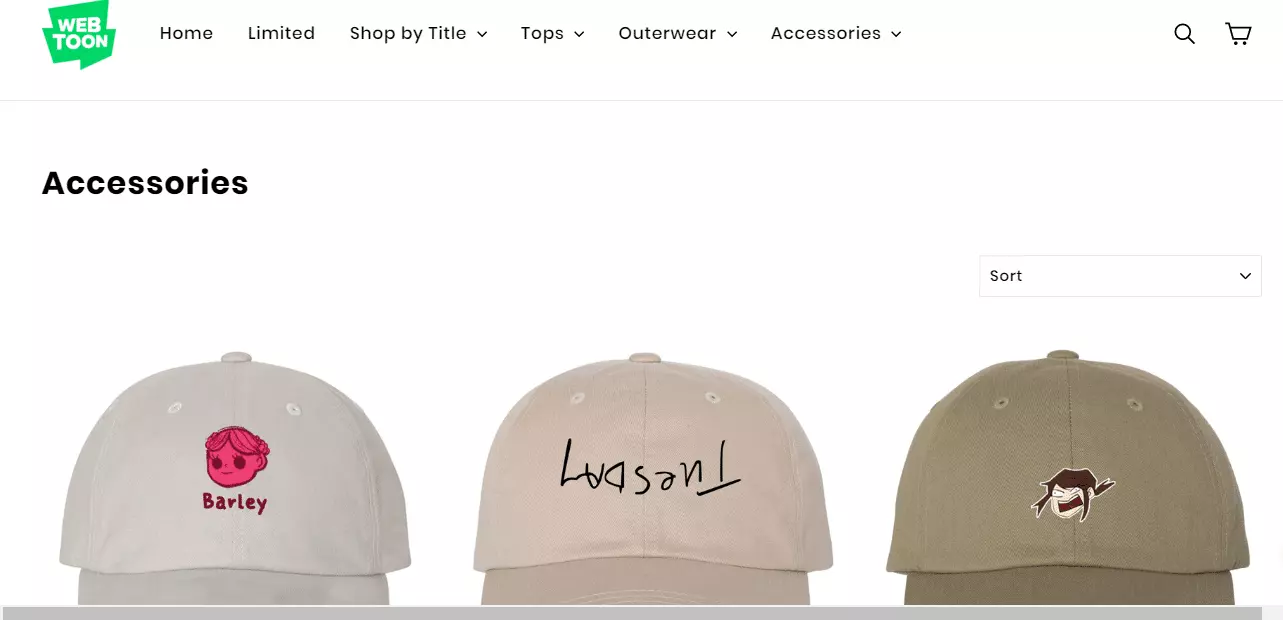
Profit Page Share Program
Back then, in 2013, Naver was planning to develop something huge. The company hired more artists for Webtoons to achieve this, as the number of artists wasn’t sufficient. Besides, the artists demanded that they were struggling with subpar income. This led the publisher to launch a new program, Profit Page Share. So, what was it?
Previously, Naver hired artists based on a set fee (e.g., giving them an x% of ad revenues, eCommerce revenue, etc.). With the Profit Page Share program, the publisher helped the artists to earn $2,000 per artist more in income. Soon after the announcement, Naver’s Webtoons hired 108 artists (Src). It wasn’t the last tactic to hire talented artists for the Webtoons. One more – Challenge League- still active for comics enthusiasts.
Challenge League
JunKoo Kim announced a talent program, “Challenge League*,” to discover the right talents worldwide. It is an open-source platform that allows registered artists to upload and share their original comics on the website.
*Challenge League has been renamed later and known as the “Discover platform.”
Every month, the Head of Content of Webtoon checks the submissions of all artists and selects the top four to five artists, and converts them into paid artists. The amount paid to the artists varies based on their experience, the region where they work, and the number of pages they publish. The Challenge League is a win-win situation that helps the publisher to find new talent.
With the growing popularity of new gadgets and high-speed internet, people outside Korea started taking an interest in Webtoon. Foreigners first began to use it to learn Korean, but later they started enjoying it.
And some of the mischievous people even started to translate the webtoons and circulate them illegally and gained large followers. When Naver came to know this, they launched Webtoons on a global level for people outside of Korea.
“We have been actively preparing for the globalization of webtoons since last year. In the next decade, webtoons will become the new center of Hallyu if we work hard,”
– Han Sung-suk, Head Director, Naver (Src).
From Naver Webtoon to LINE Webtoon
2014 – 2019
Globalization of Naver Webtoon
Since Naver launched LINE Webtoons in 2014. But why was Webtoons renamed as LINE Webtoons? Because Naver is the operator of LINE, a popular messaging mobile app, it had 460 million registered downloads at that time (Src).
Now Webtoons, known as “Naver Webtoons” in Korea, was introduced as “LINE Webtoons” in the U.S. The aim was to offer a slew of digital cartoons in English and let people across the globe know about Naver’s Webtoons brand.
“The priority for Naver will be in securing a wide user base globally using webtoons.”
– Y.G.Kwon, Analyst, Dongbu Securities, Seoul.
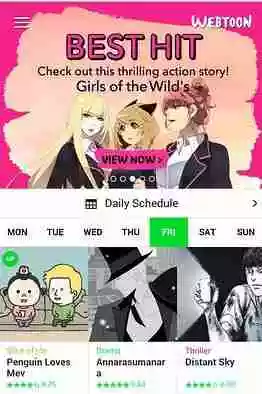
A few months later, Naver launched a mobile app for the audience to access Webtoons’ content easily. But the challenge in front of Naver was to compete with other apps or platforms that were offering “manga” (refers to cartoon characters) for free in the market, just like Webtoons.
However, the publishing company was still ahead of its rivals. Daum, one of its top rivals who began its service in 2003, published over 85 webtoons daily. At the same time, Naver was already doing 100 webtoons a day. What made it happen?
We can credit their unique strategies, including the Profit Page Share Program and Challenge League. By the time Naver launched LINE Webtoons, it had an average base of 6 million daily viewers.
Later in the same year, Naver launched LINE Webtoons for Thai, Indonesian and Taiwanese audiences. Due to the unique and easily accessible content, the website gained traction from the global audience in a few months. According to the CEO, Line’s Webtoon recorded a 71% increase in monthly active users after the globalization of the platform.
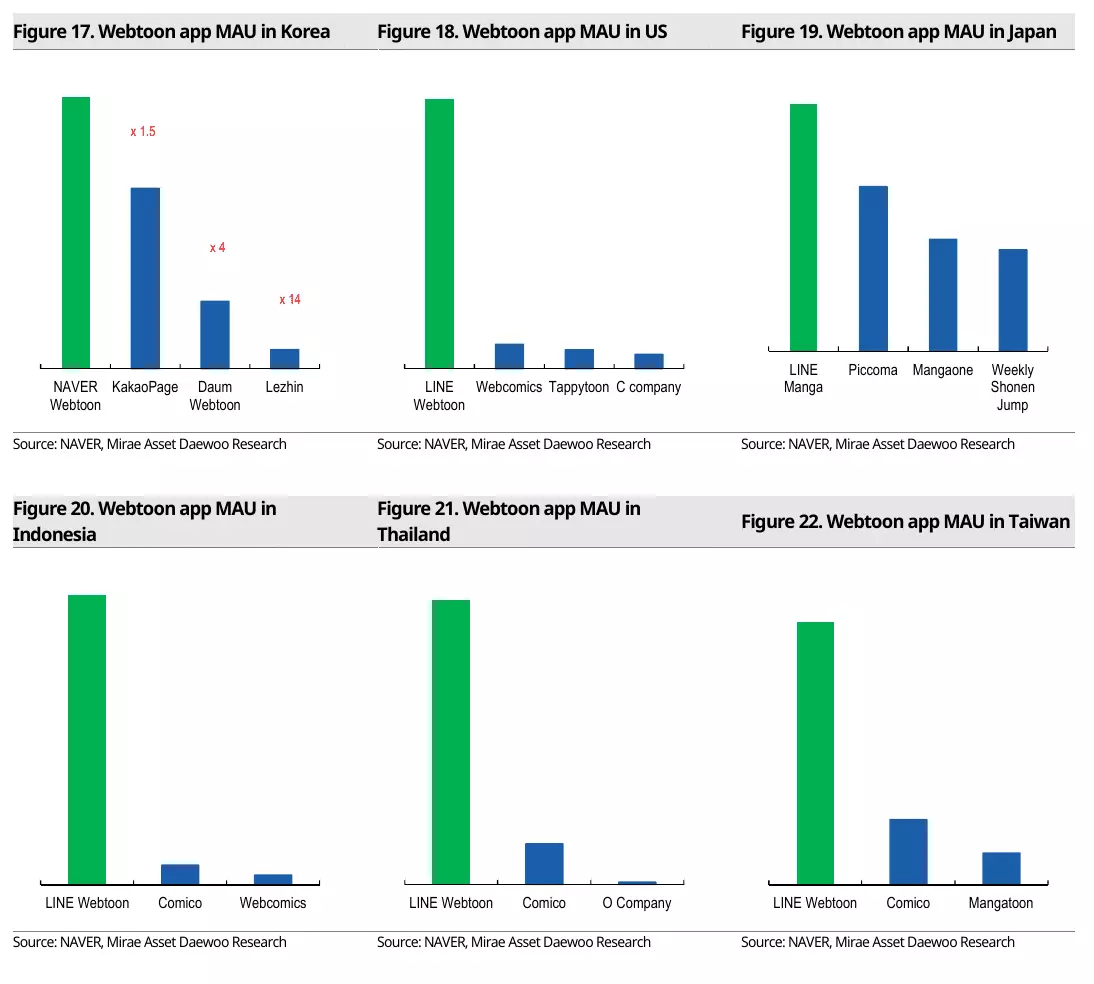
If you have been in the publishing business for a while, you might know how challenging it is to pay content creators while providing content for free on an open platform. With the growing popularity of Webtoons amongst Asian and U.S. comics fans, the publisher realized that the content creators needed more monetary support to pursue their artistic ambitions and keep the business running at Webtoons. And this led the publisher to integrate Patreon into Webtoon.
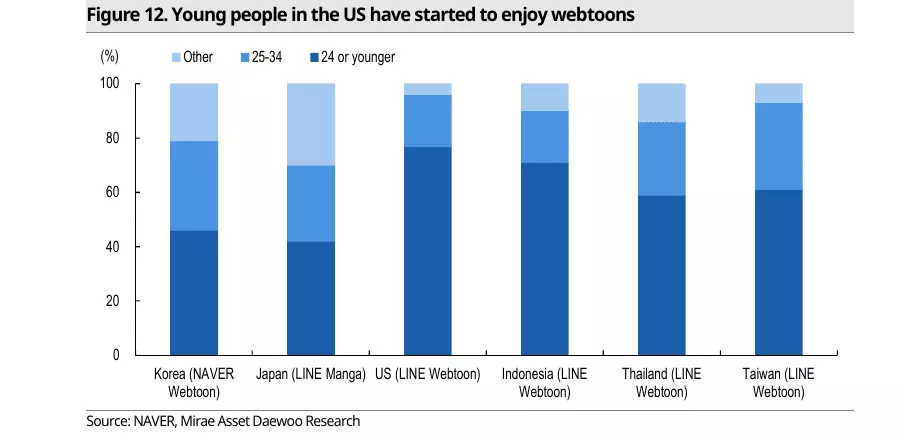
Partnership with Patreon
At the beginning of 2016, Naver ran into a partnership with Patreon, a crowdfunding site. Via this new partnership, the publisher integrated two services of Patreon into LINE Webtoons that enabled Webtoons readers to make donations easily. Besides, the publisher announced that an additional $1,000 would be awarded to the creators who fulfill the criterion:
“In order to qualify for Webtoons’s pledge, creators will need to:
- a) Update at least twice a month
- b) [Have 3k+ subscribers (All regions) AND have 10k+ US monthly pageviews / update*]
OR
[Have 5k+ subscribers (All regions) AND have 5k+ US monthly pageviews / update] (Src)
The partnership definitely helped both sides – Patreon and Webtoons. While Patreon saw an increment in the audience base, Webtoons explained the success as:
Patreon has optimized the revenue experience for creators like no other service has before and built up a huge base of self-supported creators and dedicated patrons,”
– JunKoo Kim, CEO and Founder, Line Webtoon (Src)
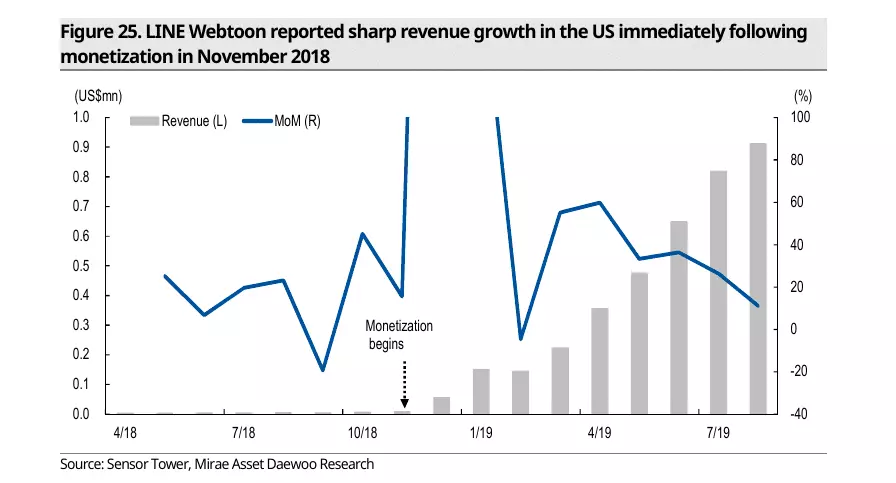
Content Partnerships
Besides the Patreon partnership, the publishers partnered with various other platforms and famous personalities, including comics legend Stan Lee and YouTube personality expert Michelle Phan. While Stan Lee helped in deciding the winners of content on Webtoons.com, Ms. Phan agreed on sharing her fantasy and science fiction stories on the Webtoons portal. Another partnership was done with Marc Silvestri, who brought his Cyberforce series to the website but with twists.
Since launching Webtoon on a global level, Naver has garnered 18 million readers by the year 2016 and announced that the global readers are higher than Korean readers (i.e., 16 million) by experimenting with sponsored content partnerships and advertising strategies.
“It is generally believed that the global expansion of webtoons is not easy compared with other social network services. We’ve attained this feat in just two years.”
– Naver Spokesperson (Src)
By the end of 2017, the artists came from various countries such as Indonesia, Thailand, and China and created more than 600 webtoons with the help of 120+ comic artists hired by running competitions overseas to cater to the U.S. audience webtoons.
“The webtoon is a new form of digital content still at the very beginning stage, so there’s so much potential in this market.”
– JunKoo Kim, CEO and Founder, Webtoons.
As the Webtoons was now available in English, the publisher saw that the new audience could like numerous old Korean webtoons. So, JunKoo Kim came up with the idea of translating webtoons into new films and series. For that, the publisher launched a new content unit Studio N.
Content Studio N
It was August 2018 when Naver announced its Studio N (Src) launch. The new unit is utilized to translate popular webtoons into new films and series for the audience. As technology grew, the parent company took the help of various advanced solutions such as Machine Learning and Artificial Intelligence to enhance content production and translation.
“Studio N will strive to discover the best way to translate the unique storyline of a webtoon into movies and drama series.”
– Kwon Mi-kyung, Former Head, Korean film business.
Studio N worked with several media companies to produce and develop films based on the intellectual property of popular webtoons. These short comic films and series are one of the major sources of revenue for the publisher. By the end of 2018, consumers’ behavior shifted towards Connected TVs (Hulu, Amazon Prime, Roku, etc.).
Looking at the current trends, Webtoons tried to evolve with time and started distributing content over Netflix and CTV media channels.
“Naver Webtoon plans to increase its foothold in the global market, including Korea, North America, Europe and Asia.”
– JunKoo Kim, CEO and Founder, Webtoons (Src)
In 2019, the publishing company had 580,000 amateur artists and 1600 professional cartoonists who were publishing content on Webtoons.com.
For Webtoons, most revenue comes from merchandising products and digital advertising. The publisher has been saying NO to programmatic advertising for some time. However, the publisher started with header bidding in 2019 when he saw the benefits of the technology
Programmatic Foray
Previously, the publisher worked with Google AdSense and a few other ad networks. But after making the Webtoons globally available for all, the publisher came across the header bidding framework, Prebid. Publishers with millions of readers were already monetizing their traffic with Prebid. So, why not try that for Webtoons.com?
In a month, the publisher partnered with some of the top supply-side platforms, including AppNexus, Rubicon, TripleLift, and OpenX, and set up header bidding on its site. Unlike many publishers who display ads on several pages, Webtoons shows a single ad on one page simultaneously. Another instance where a publisher could’ve made millions by adding units — but didn’t. Why? To Webtoon, user experience matters more.
Compared to other publishing giants, Webtoons is pretty new to programmatic, and we need to wait to find out how programmatic is contributing to Naver’s revenue. For now, all we can say is that Naver’s Webtoons is one of the formidable giants that will definitely grow in the future. The CEO of Naver Webtoon expects the revenue to be up by 47% in 2020 and expects it to reach 1.03 trillion won (~$84 billion) (Src).
“Naver Webtoon is a unique platform where artists can cross national boundaries to connect with readers and business partners. We are going to turn Naver Webtoon into a global entertainment company like Disney.”
– JunKoo Kim, CEO and Founder, Webtoon (Src)
Conclusion
Webtoons are not just for hardcore comic geeks. They aren’t limited to paper-based comic books anymore. When it’s about Naver’s Webtoons, the art is amazing, the humor is great, and the stories are accessible. Although Webtoons is barely a 15-year-old entity, the publisher is changing the traditional comics landscape as we know it. Even though the publisher started as a startup, the way it experimented with the strategies is quite interesting and unique. Let us know in the comment what you liked the most.


